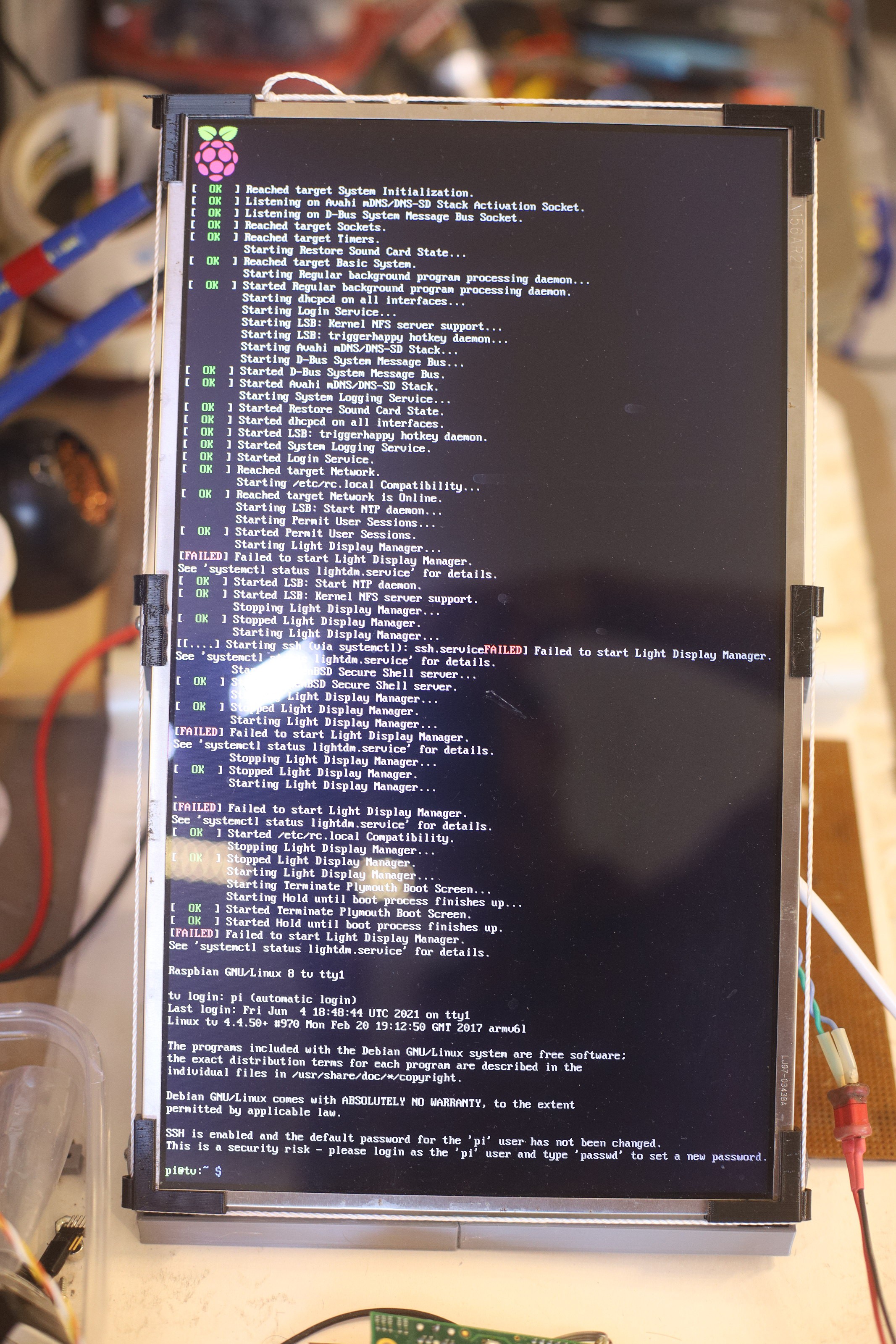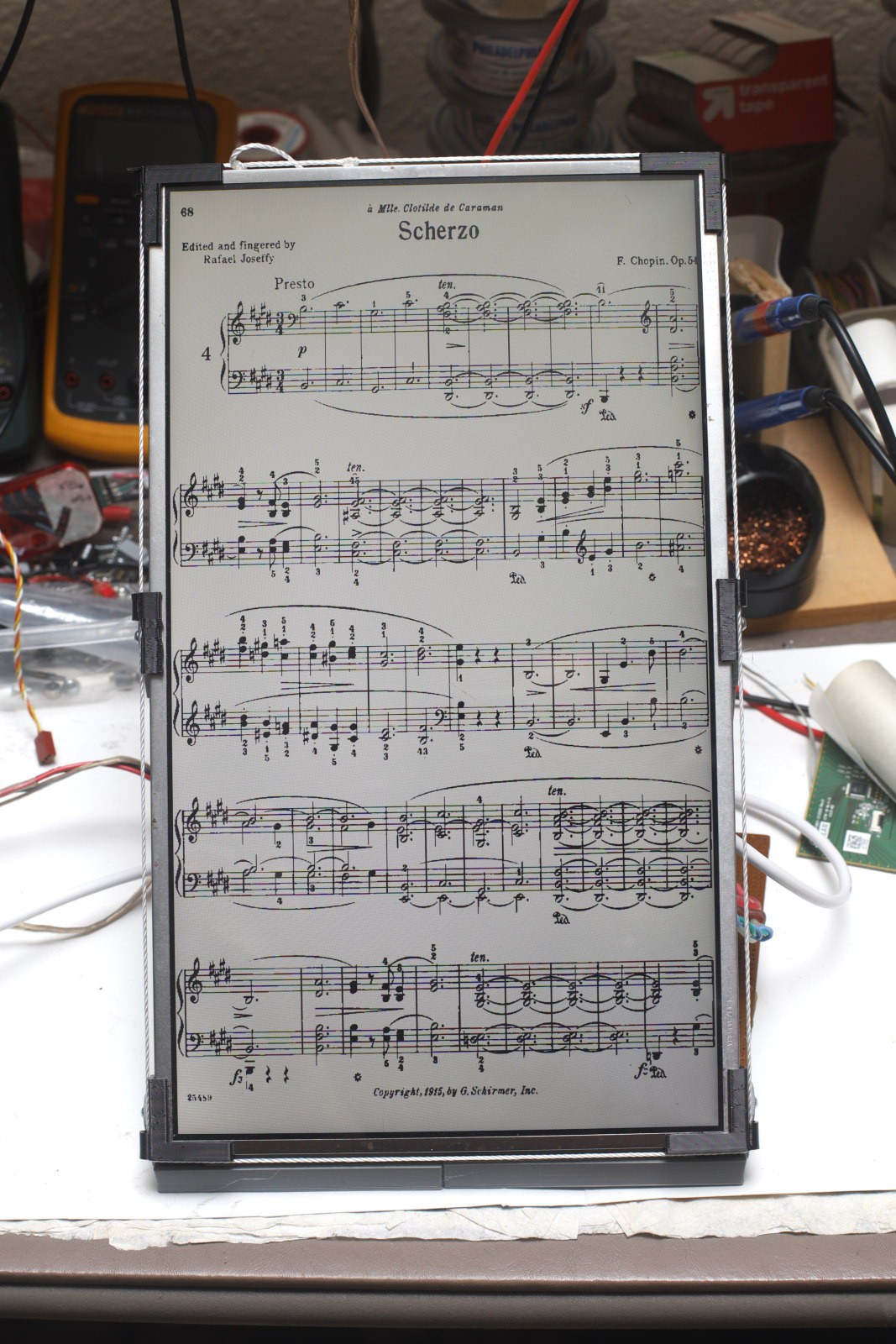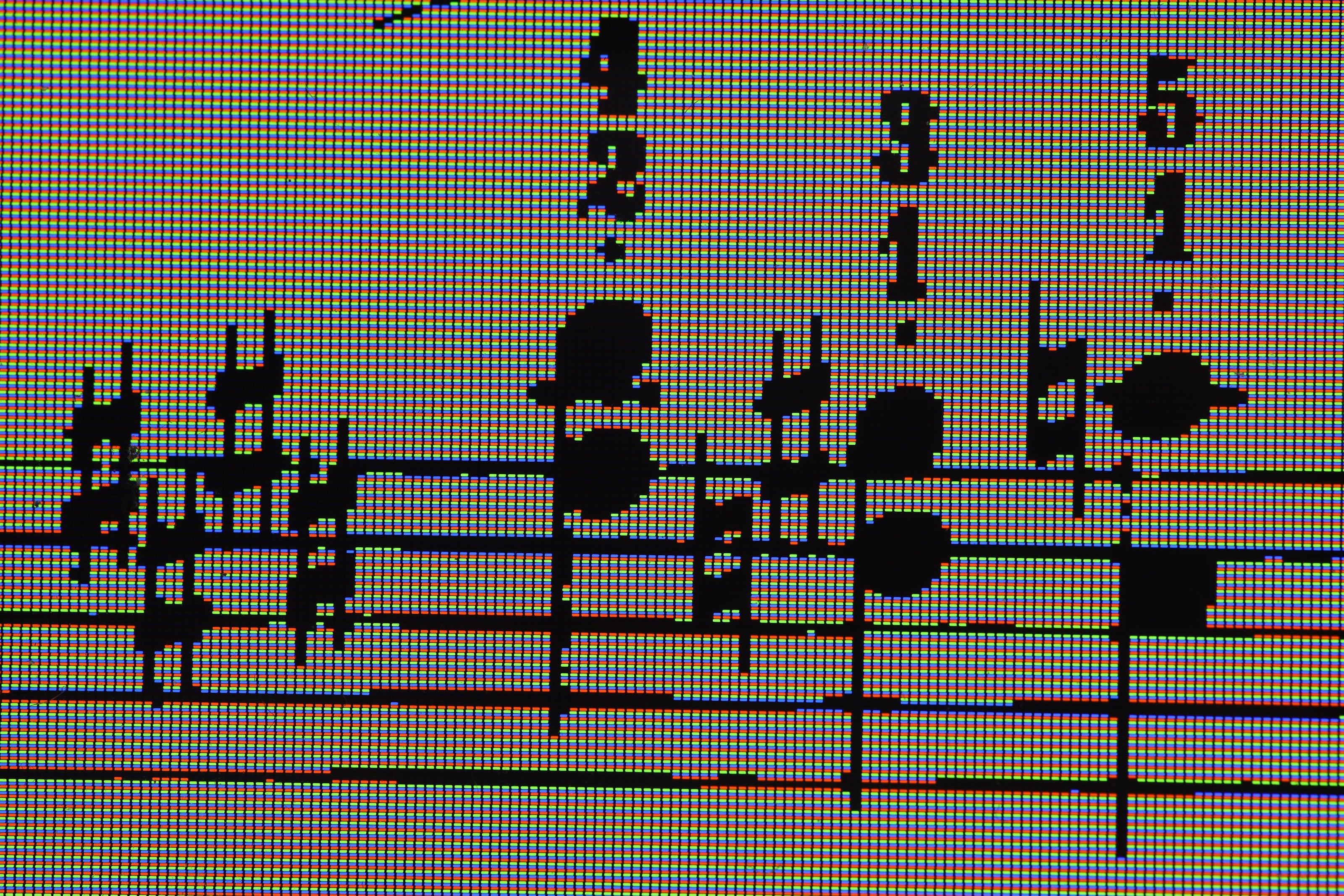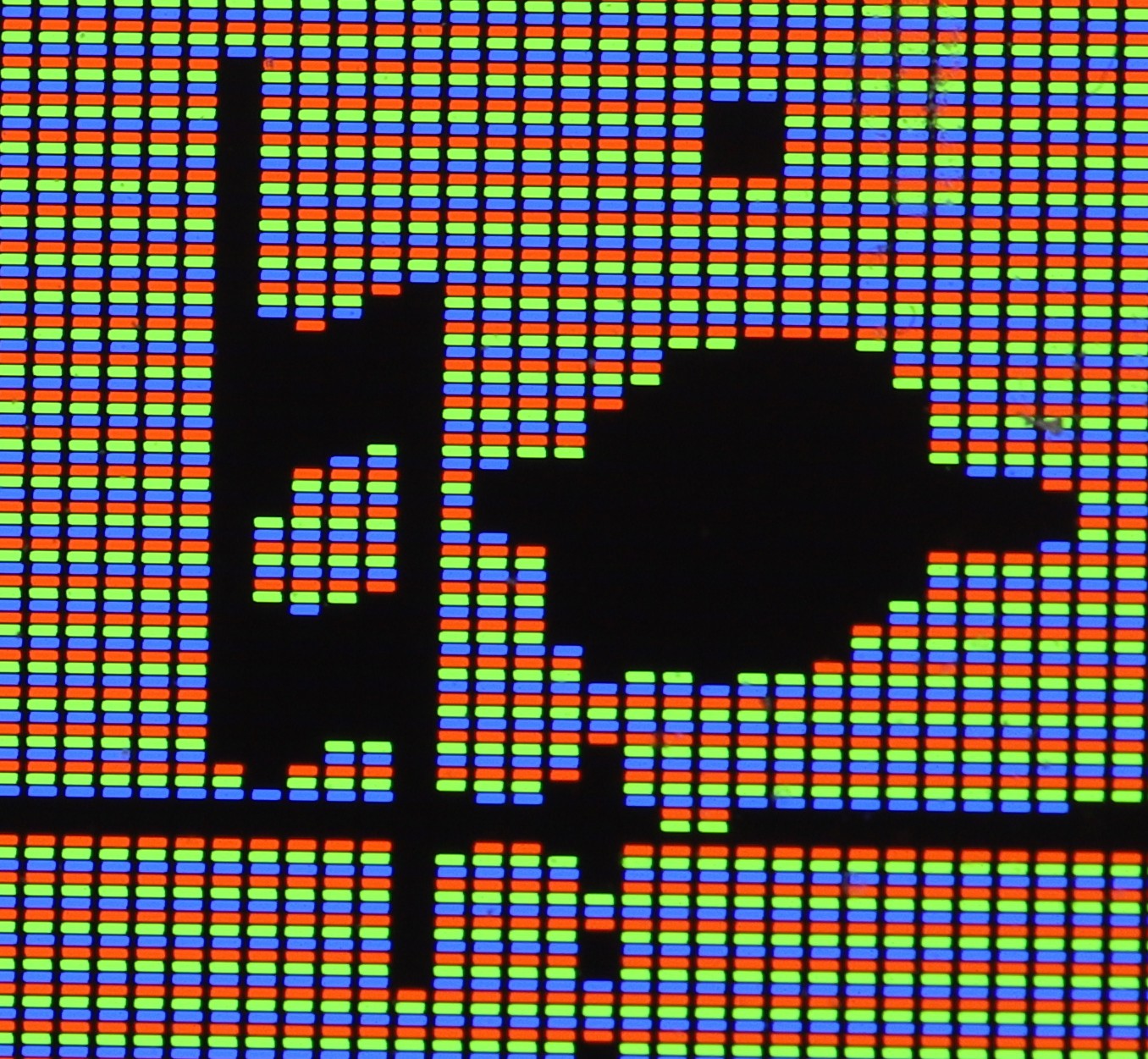Rotating the framebuffer on a raspberry pi required editing /boot/config.txt & adding
display_rotate=3
to the top.
It's essential for the pointer to move in the right direction, since the lion kingdom plans on using a standard X11 pointing device.

A growing list of configuration settings will be required to disable screen blanking & drive 2 screens.
The Cinelerra toolkit amazingly compiled for ARM pretty easily. Compiling Cinelerra for ARM would be problematic because all the 3rd party libraries are written in assembly language. After a few pixel mangling functions, the text finally appeared.

It was the 1st time a lion had a scanned piece of music in more than its original 12" height, on a practical display.

A key feature ended up being splitting each pixel into RGB triples to get more vertical resolution.

If all the pixels were white, it would be just 1366x768 instead of 4098x768.
This version loaded all the pages from 300dpi PNGs, stretched, & cropped to fill the panel on the raspberry pi. It was too slow to be practical. The slowest step was decompressing the PNG files. It needs to load an uncompressed image format which has already been converted directly to the framebuffer format on a faster confuser.
 lion mclionhead
lion mclionhead
Discussions
Become a Hackaday.io Member
Create an account to leave a comment. Already have an account? Log In.